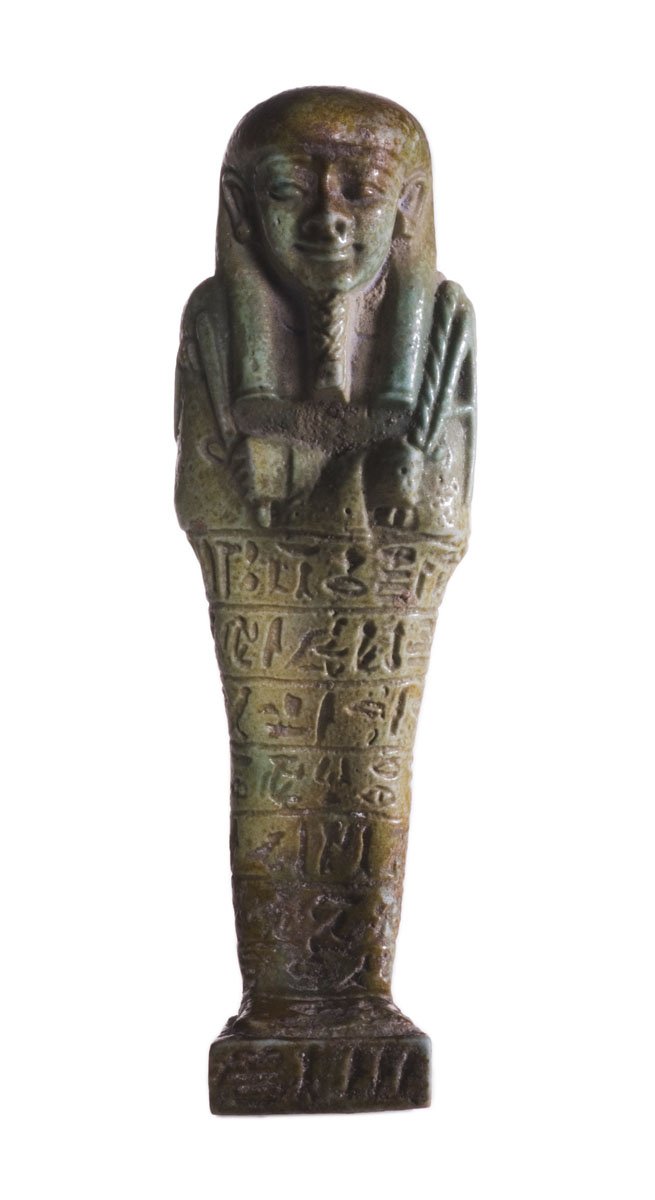
Shabti
Egyptian Art
| Place of production | Egypt |
|---|---|
| Date | 7th-6th centuries BC |
| Object type | sculpture |
| Medium, technique | serpentinite |
| Dimensions | height x depth: 13.3 x 5.6 cm |
| Inventory number | 51.237 |
| Collection | Egyptian Art |
| On view | Museum of Fine Arts, Basement Floor, Ancient Egypt, Daily life |
This torso is all that has remained of this statue after it broke along a diagonal line from the left shoulder down towards the right arm. The head is covered by a wide wig composed of regular curls reaching down to the shoulders and somewhat rounded off at the ends, at the line where the supporting pillar begins. The face is rectangular; the eyes are almond-shaped and somewhat asymmetrical. Despite being damaged, the nose is the key feature of the face: the noticeably wide tip is flanked by deep lines, highlighting the shape. The arm and the chest are finely detailed.
The torso is an example of one of the main sculptural trends in Egypt in the seventh century BC. Artists of the period often drew inspiration from past eras. The realism and expressivity of portraits dating from the Middle Kingdom had a strong impact on the rebirth of the realist style that can be observed at the time of the Twenty-fifth – Twenty-sixth Dynasties. The deep lines under the eyes, the protruding cheek-bones, the wide, thick nose, and the well-defined jaw under the facial muscles render the face and expression of close attention. The thick, wide nose is reminiscent of some characteristic portraits dating from the Kushite Period, but the lack of the “Kushite wrinkle” and the modeling of the eyes suggests a somewhat later style, i.e., that of the early Twenty-sixth Dynasty.
Nagy, István, “Trois monuments égyptien de la basse époque/Három egyiptomi emlék a késői korból”, Bulletin du Musée Hongrois des Beaux-Arts/Szépművészeti Múzeum Közleményei 97 (2002), p. 7-19, 135-141, fig. 6-9.
A Szépművészeti Múzeum Egyiptomi Gyűjteménye, Szépművészeti Múzeum, Budapest, 2012, p. 92-93, no. 42.
This record is subject to revision due to ongoing research.